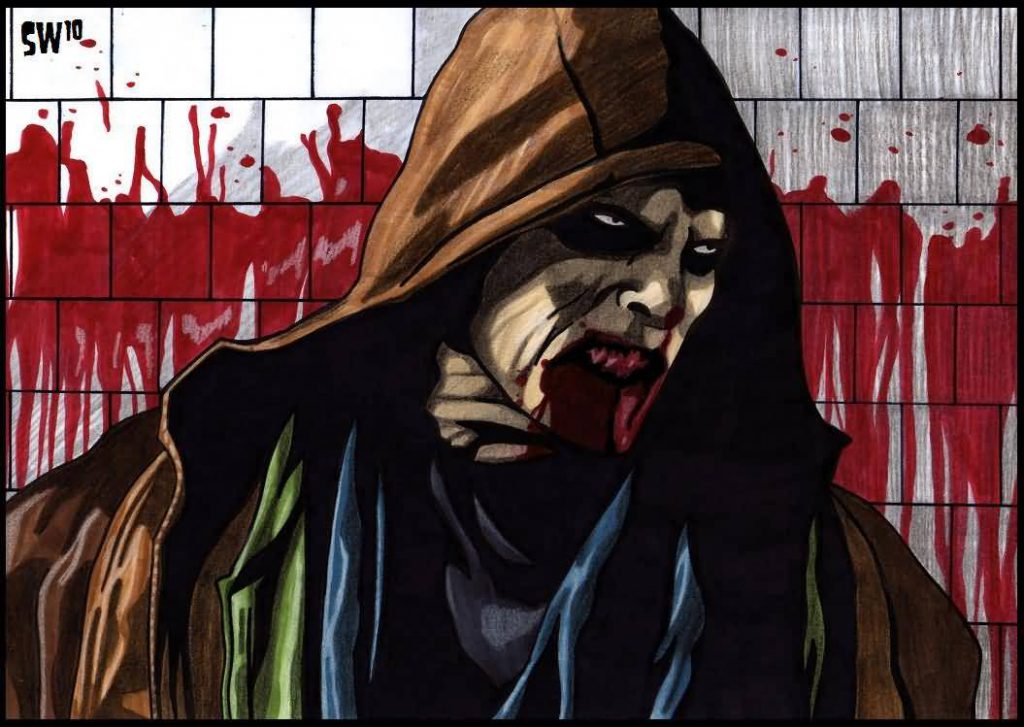The shadow
Kathleen C. LaFlamme (The Savage Garden: Goth And The Vampire Archetype, 2001) stresses the shadow status of the vampire, especially in its related to the alienated:
Indeed, the vampire is a perfect shadow figure. Human in appearance, this shadow resembles us. Living in darkness, it is hidden from those who walk by day. Feeding on the blood of the living, it draws its power from the “normal” world. Immortal: this shadow will not disappear. It continues to fascinate.

On this point, as noted by Martin V. Riccardo (Liquid Dreams of Vampires, 1996): The vampire may be an escape — an escape of all the limitations of human reality. In our own minds, we can make the vampire whatever we wish it to be….
an inherited pattern of thought or symbolic imagery derived from the past collective experience” Because of the vampire being linked as a modern archetype, the two schools of literary criticism we’re looking at automatically looks for metaphor, simile, and other forms of hidden author intent, either consciously or subconsciously.
The concept of vampiric parents and/or psychic vampires is a concept better left for another time however.
Alex Lucard (Nyogtha, Volume I, Issue XXII, 9 May 2005) notes that due to the overwhelming popularity of vampirism in the 20th century, the vampire is now listed in some fields of psychology as an archetype, namely an intrapsychic psychological interpretation in the collective unconscious.
Following Carl Jung, analysts, such as Julia McAfee (The Vampire Archetype and Vampiric Relationships, 1991) the vampire is understood as the shadow self. In the commentary of Alex Lucard (Psychological and literary criticism, 2005):
The vampire became a key fixture in society according to Jungians, because it became a mental scapegoat of sorts. It allowed humanity to project the negative aspects of ourselves onto something we could both openly revile and admire without actually acting out the desires and impulses ourselves. The vampire acts in the way humanity wishes it could, but can not due to social restraints. The Jungian interpretation of the vampire assumes that all humans have a vampire inside of them. We have an unconscious understanding this archetype is real and part of us all, and that it is both evil and yet tragic at the same time. However, the majority of humanity fails to grasp that the vampire is in fact an expression of our inner selves, that it represents a fragile reality that is both elusive and yet threatening, and that one can only engage in it through empathy and effort.
Through her work as a psychotherapist Dorothy Hayden (Psychological Dimensions of Masochistic Surrender, 2001) became aware of the forces drawing her clients into the subculture attracted to the vampire archetype and the masochistic dynamics of submission:
Masochism may be imagined as cultivation of what Jung called the “shadow” — the darker, mostly unconscious part of the psyche which he regarded not as a sickness, but as an essential part of the human psyche. The shadow is the tunnel, channel, or connector through which one reaches the deepest, most elemental layers of psyche… Embracing the shadow, on the other hand, provides a fuller sense of self-knowledge, self-acceptance and a fuller sense of being alive. Jung’s idea of the shadow involves force and passivity, horror and beauty, power and impotence, straightness and perversion, infantilism, wisdom and foolishness….
